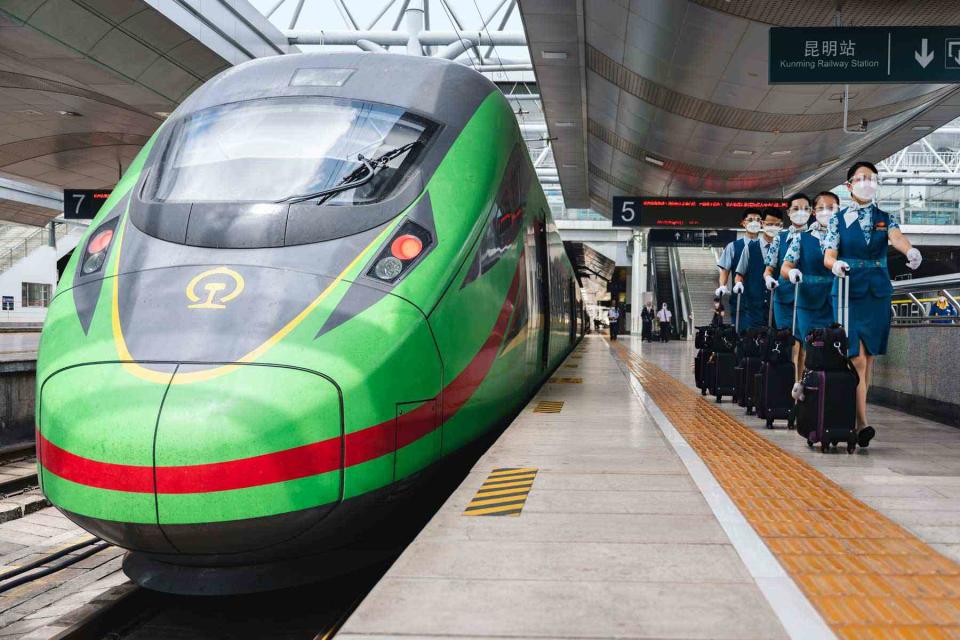This Southeast Asian Country Has a New Railroad Bringing Travelers to Scenic Landscapes, Bustling Cities, and Lesser-known Destinations
Among the mountains and rivers of Laos, a new cross-country railway ushers in an age of super-smooth travel.

Xinhua News Agency/Getty Images
A station in Kunming, China, which connects to Laos by rail.Not long ago, traveling between Laos’s most popular towns for visitors — the architecturally fascinating capital, Vientiane; dramatic karst landscapes of Vang Vieng; and temple-filled Luang Prabang — required long drives on switchback roads. Traversing the bumpy 200-mile stretch between Vientiane and Luang Prabang could take eight hours, on a road shared with public buses and minivans packed to the gills with live poultry and bags of rice. Of course, some travelers opt to fly to Luang Prabang, but in doing so miss seeing the ridiculously beautiful, mountainous countryside.
Thanks to the launch of Laos’s first cross-country railway service, there’s now a better option. The 257-mile Boten–Vientiane railway opened in December 2021, connecting for the first time the town of Boten, along the northern border with China, and Vientiane, together with up-and-coming destinations along the way. With travel speeds of up to 99 miles per hour, the trains can reduce to four hours a journey that would’ve taken, as recently as 2020, at least two days by road. The trip from Vientiane to Luang Prabang can be done, station to station, in as little as two hours.
“It’s made getting around Laos much faster and much cheaper,” says Ruben Derksen, of Asia-based tour operator Exo Travel. The service is also opening up formerly hard-to-reach corners of the country, Derksen observes. “Getting to the tribal villages around Muang La, for example, used to require a five-hour trip from Luang Prabang with a costly private car and driver.”
Now travelers can opt for a short rail trip to Muang Xai, a gateway city to the area, before going deeper into the countryside. “It will stimulate the local economy,” Derksen says, “and new tourism developments will provide work opportunities in these remote villages, which are still relatively underprivileged.”
Construction of the new cross-country train was a joint venture with China, which aims to connect much of Southeast Asia by rail as part of its massive Belt and Road Initiative. Plans call for a seamless connection from Kunming, in southern China, all the way to Singapore, more than 1,600 miles to the south, via Laos, Thailand, and Malaysia. (Bangkok, for its part, has just opened the largest railway station in Southeast Asia, the Bang Sue Grand Station.)
Completion of the huge project could take decades, but will potentially make possible epic rail journeys such as Singapore to Shanghai, Bangkok to Beijing — or even, pending geopolitical events, Lisbon to Singapore, via Moscow.
As for the onboard experience in Laos today, it rivals that of the best high-speed trains in Asia, with air-conditioned carriages, ample legroom, and power outlets between the seats. An online ticketing platform is slated to launch this year; for now, the easiest way to book is through travel advisors such as those at Exo, who can also recommend itineraries that take advantage of the new railway.
A version of this story first appeared in the October 2022 issue of Travel + Leisure under the headline "All Aboard in Southeast Asia."
For more Travel & Leisure news, make sure to sign up for our newsletter!
Read the original article on Travel & Leisure.

